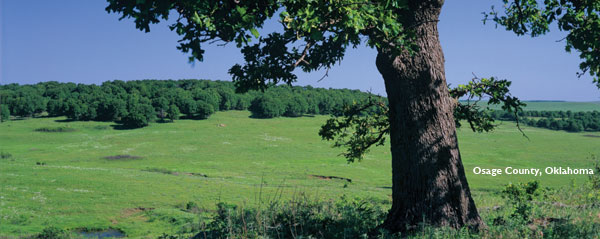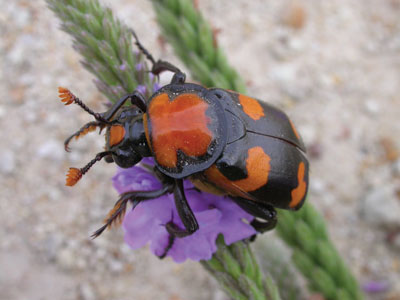|
back Home Cross TimbersGateway from forest to prairie Biodiversity of Oklahoma series |
|
American Burying Beetle
Nicrophorus americanus
| This
large beetle is approximately 1-1.5 inches long. As the largest
member of the carrion beetle family, it feeds on the carcasses of dead
mammals, birds and reptiles. The American Burying Beetle occupies a wide range of habitat types including tallgrass prairie, woodlands, and forests. They reproduce in the spring and summer (early May through August). A pair of beetles will find a carcass that is approximately the size of a rat, bury it a few inches below the surface of the ground and lay a small clutch of 10 to 25 eggs on it. Their populations appear to be more limited by the availability of suitable carcasses for reproduction than by habitat loss. Currently, the American Burying Beetle occurs across the eastern third of Oklahoma. Despite its apparently wide range, it is rare in most of the places where it occurs. In addition to Oklahoma, populations exist in Arkansas, Missouri, Kansas, Nebraska, South Dakota, Rhode Island and Massachusetts. Historically, the American Burying Beetle occurred through the eastern United States from the eastern edge of the Great Plains to the Atlantic Coast. The reasons for the decline in American Burying Beetles are uncertain. Pesticide use has been speculated as a leading cause. Another potential factor may be a reduction in the abundance of carcasses that are of suitable size for success reproduction. From the Oklahoma Department of Wildlife Conservation Rare Species Page. |
|
|
back to species list |
PDF of all species profiles
|

